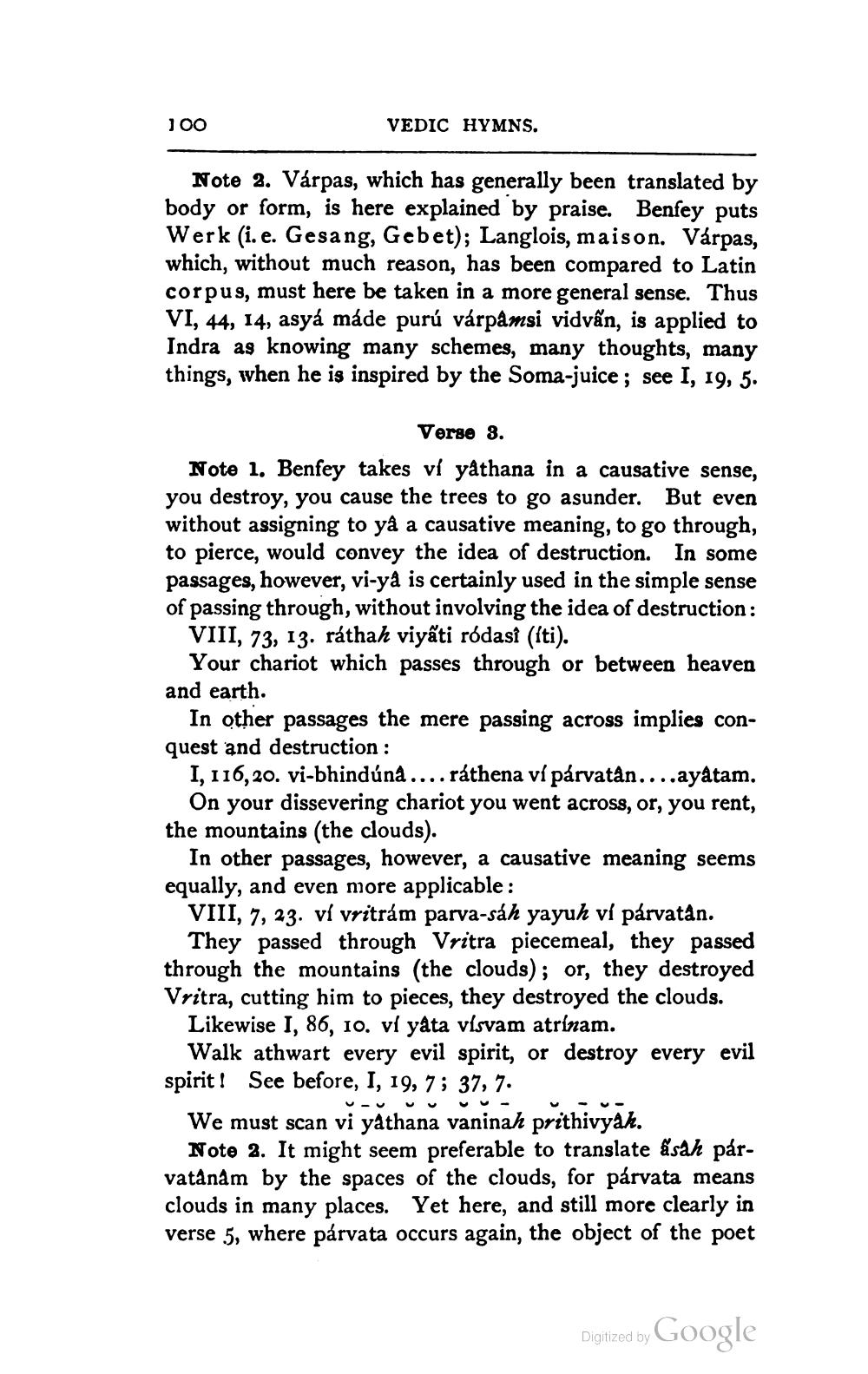________________
100
VEDIC HYMNS.
Note 2. Várpas, which has generally been translated by body or form, is here explained by praise. Benfey puts Werk (i.e. Gesang, Gebet); Langlois, maison. Várpas, which, without much reason, has been compared to Latin corpus, must here be taken in a more general sense. Thus VI, 44, 14, asya made purú várpamsi vidvấn, is applied to Indra as knowing many schemes, many thoughts, many things, when he is inspired by the Soma-juice; see I, 19, 5.
Verse 3. Note 1. Benfey takes ví yathana in a causative sense, you destroy, you cause the trees to go asunder. But even without assigning to yà a causative meaning, to go through, to pierce, would convey the idea of destruction. In some passages, however, vi-ya is certainly used in the simple sense of passing through, without involving the idea of destruction:
VIII, 73, 13. ráthah viyati rodasi (sti).
Your chariot which passes through or between heaven and earth.
In other passages the mere passing across implies conquest and destruction :
I, 116, 20. vi-bhindúna.... ráthena ví párvatân....ayatam.
On your dissevering chariot you went across, or, you rent, the mountains (the clouds).
In other passages, however, a causative meaning seems equally, and even more applicable:
VIII, 7, 23. ví vritrám parva-sáh yayuh ví párvatan.
They passed through Vritra piecemeal, they passed through the mountains (the clouds); or, they destroyed Vritra, cutting him to pieces, they destroyed the clouds.
Likewise I, 86, 10. ví yata visvam atrinam.
Walk athwart every evil spirit, or destroy every evil spirit! See before, I, 19, 7; 37, 7.
We must scan vi yäthana vaninah prithivyāk.
Note 2. It might seem preferable to translate ásah párvatanam by the spaces of the clouds, for párvata means clouds in many places. Yet here, and still more clearly in verse 5, where párvata occurs again, the object of the poet
Digitized by
Digized by Google




